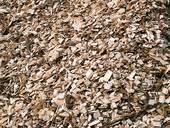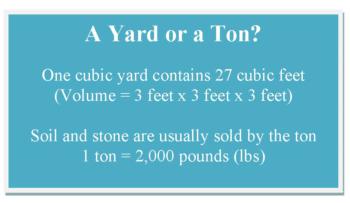Unused stories
Gardening Tips - Mulch
Consider mulch to help conserve water in the soil…

But you actually can have too much of a good thing—you can create a problem rather than a solution if you’re not careful about what kind of mulch you add, when you add it and how much you add. So, before you head off to the home improvement center or landscape supply place, think about what you’re trying to accomplish with the mulch, and where you plan to use it.

Black polyethylene plastic does a great job in preventing weed growth and holding water in the soil, though isn’t recommended if your area is poorly drained. You can get material that has small holes in it that breaks down fast if it’s exposed to sunlight.
Cocoa bean hulls, the dark brown shells of cocoa beans are attractive, easy to apply, are fairly stable and their appealing chocolate scent disappears quickly. Be careful if you have dogs; the hulls may contain residual theobromine that can be poisonous to them.
Grass clippings are a quick source of nitrogen though they can form a thick mat that water can’t penetrate. They decompose rapidly building up a great deal of damaging heat, making them a short-lived mulch and potentially harmful to plants. Be careful not to use clippings from lawns that have been treated with herbicides.
Gravel, pebbles and crushed stone are permanent and will provide good weed control. These materials reflect solar radiation and can result in a very hot environment during the summer.
Newspaper can effectively keep down weeds; to keep it from blowing away, weight it down by covering with another mulch material. Avoid using paper with color dyes that may be harmful to soil flora.
Shredded bark from redwood or cedar trees may be available from tree trimming companies. If they’re fresh, they tie up soil nitrogen as they break down, making it unavailable to the plant, so you’ll want to add some compost or well aged manure on the soil before adding the bark.
Tree leaves are best used shredded or composted; they’re easy to get, attractive as a mulch, and after they decompose, dig them into the soil and add a new layer of mulch on top.
Wood chips contain bark and pieces of wood of various sizes, make an attractive mulch and provide good weed control. Wood chips may attract termites and other insects. Be sure that they are from healthy trees so that you don’t perpetuate any pest or disease.
While the best time to add mulch in our climate is mid- to late spring, it is beneficial anytime in the growing season. If added too early in the season, it can result in soggy soil that warms slowly. Before mulching, remove weeds and work the soil lightly to prevent a hard layer from forming on top under the mulch that water and air can’t penetrate. It’s also a good idea to have the soil moist, so the mulch doesn’t rob it of its moisture.
The amount of mulch you add depends on the texture and density of the material, and the quality of drainage in the soil. A good rule of thumb is to add 1½ to 3 inches of mulch. Much more than this, or “too much of a good thing” and you may restrict air and water movement that can result in “mulch toxicity,” where anaerobic (without air) conditions are created. Symptoms of mulch toxicity include yellowing of the plant leaf margins, scorching or dropping of leaves and occasionally entire plant death. Carefully spread an even layer keeping it a few inches from the stem of the plant or the trunk of a tree. Wet mulch piled against the base of the plant can attract mice and voles to nest or cause them to rot.
Mulch is a marvelous thing—and no single mulch is perfect for every individual and garden. You may find you want to use different types in different parts of your garden. Just remember, you can have “too much of a good thing”!
By Nanette Londeree
